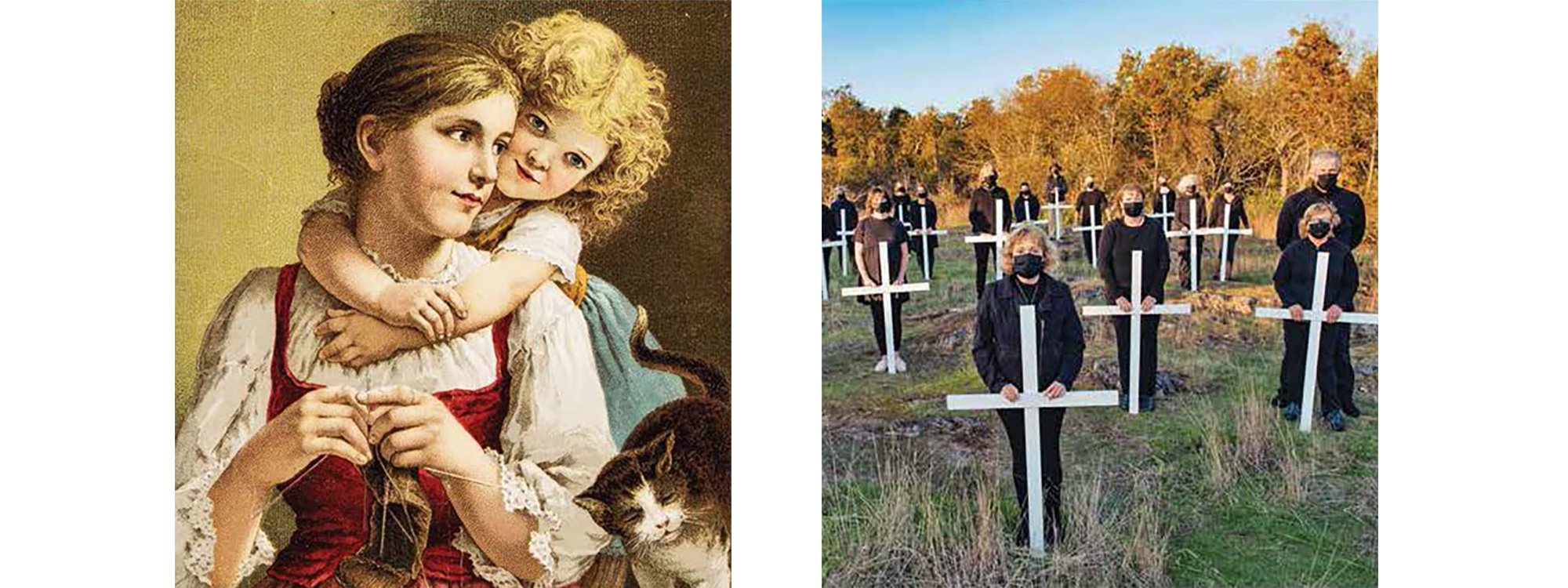
Images from Heroin. At left, one of a series of 22 cards for Dr. Jayne’s Expectorant, which contained opium. At right, a photograph from B.C.’s Moms Stop the Harm Day of Action, April 14, 2021.
Scholar and activist Susan Boyd became deeply interested in the history of heroin while researching her book Busted: An Illustrated History of Drug Prohibition in Canada (Fernwood Publishing, 2017).
Boyd, a distinguished professor of human and social development at the University of Victoria who has studied the history of drug regulation in Canada, points out that the stereotypical images associated with addiction – images that she calls disappointing and destructive – can be traced back to the misconceptions of heroin users in the 1930s just as the drug began to be criminalized. These same attitudes were applied to other drugs (and their users) that were made illegal over the following decades.
“The power of imagery is immense in telling stories,” Boyd says. “You could have an article that would be supportive of heroin-assisted treatment in the newspaper, but the photo might be of people shooting up in a dirty alleyway. Those images, collectively, really resonate in shaping our ideas about a subject, and solutions to those issues, too.”
In Heroin: An Illustrated History (Fernwood, available now), Boyd wanted to tell two stories: the story of how heroin went from a prescribed drug to an illegal substance whose users were demonized in the collective consciousness and that of the harm-reduction activists and heroin users who have mounted a sustained resistance to prohibition and called attention to the continuing overdose crisis.
“I wanted to show that resistance through the decades, and the failure of the state to really respond to these preventable illegal drug deaths [that are] completely related to a poisoned drug supply,” Boyd says.
The book’s straightforward title belies a complex interior: Heroin is thoroughly researched and illustrated with a wide variety of images Boyd tracked down not only in official archives across the country, but from more than 100 years’ worth of newspaper coverage of drug policies, as well as photographs and illustrations from harm-reduction advocates and artists who were keen to share their work. The text is densely illustrated with movie posters, stills from films of exaggerated portrayals of “out-of-control addiction,” official documents, flyers for clinical trial recruitment, and archival photographs of the prisons where drug users were incarcerated. Also included are more recent photos from protests and rallies in support of a different approach to drug regulation.
To build the library of images she needed, Boyd worked through a timeline of drug regulation in Canada that she began years earlier – and to which she continued to add events until the very last moment before Heroin was published.
“I had to be methodical, leading us down the historical road to understand those issues without feeding into the stereotypes and the tropes that have supported punitive policies, and race, class, and gender injustice,” Boyd says. “Because that’s what drug prohibition is all about, really, at the end of the day.”
Boyd spent more than five years on the book, with image hunting taking up about half that time. The search for the right illustrations wasn’t always successful: sometimes days of looking for a specific image would yield nothing. At other times the images would be of insufficient quality to be reproduced.
“Finding those images is so much fun. I love archival research,” Boyd says. “When I say it was fun, the fun part was when I would find the image.”
 Contact us via email
Contact us via email

